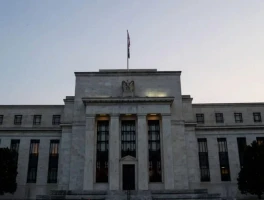Federal Reserve's Rate Cut: A Necessary Evil or a Dangerous Game?
The Federal Reserve has cut its key interest rate for the second time this year, a move ostensibly aimed at stimulating economic growth and bolstering the job market. The target range now sits between 3.75% and 4%. But is this a well-calibrated adjustment, or are we watching the central bank play a risky game with inflation and market stability?
The Fed's stated rationale is the need to support a potentially weakening labor market. Chairman Powell pointed to "downside risks to employment" in September (before the data went dark). Lower interest rates, in theory, make it cheaper for businesses to borrow and expand, leading to more jobs. But here's where the narrative starts to fray.
The decision comes amidst a near-total blackout of federal economic data due to the government shutdown. We're flying blind, relying on "a wide variety of public- and private-sector data," as Powell put it. That's a problem. How much weight can we really give to these alternative data streams? Are they as reliable and comprehensive as the official government releases? I've looked at hundreds of economic reports, and the absence of key metrics like the monthly jobs report is a major red flag. It's like trying to navigate a ship without a radar.
The Inflation Conundrum
And then there's inflation. The Fed has a dual mandate: price stability and full employment. While the rate cut is supposed to help with employment, it could potentially reignite inflationary pressures. The latest Consumer Price Index (CPI) showed inflation rising at 3% last month, which is cooler than expected, but still above the Fed's 2% target. Powell downplayed the inflation risk by excluding the impact of President Trump’s tariffs, saying that inflation is “not so far from our 2% goal.” But isn’t that a convenient way to massage the numbers? Tariffs are part of the economic reality.
This is the part of the report that I find genuinely puzzling: the reliance on a hypothetical, tariff-free inflation rate. It's like saying your diet is healthy if you ignore the donuts you eat every morning. A more honest assessment would acknowledge the inflationary pressures, even if they're deemed temporary.

The market reaction to Powell's announcement was telling. Stock prices dipped, suggesting investors were less than thrilled with the Fed's forward guidance. The S&P 500 was nearly unchanged and the Dow Jones Industrial Average closed slightly lower. Gennadiy Goldberg at TD Securities said Powell "poured cold water on the idea that the Fed was on autopilot for a December cut." This suggests the market is starting to question the Fed's conviction and its ability to steer the economy effectively.
The internal divisions within the Fed itself are another cause for concern. Two officials dissented from the decision – Jeffrey Schmid, who preferred no change, and Stephen Miran, who wanted a larger, half-point cut. That kind of disagreement suggests a lack of consensus on the best path forward. It raises the question: is the Fed reacting to data, or is it being swayed by political pressure? Federal Reserve meets today for an interest rate decision. Here's what economists predict.
A Glimmer of Hope?
There's a chance that the economy is rebounding from a sluggish first half, as Powell suggested. If that's the case, job growth could pick up, and further rate cuts might not be necessary. But that's a big "if." We're still operating in a data vacuum, and relying on anecdotal evidence and incomplete reports.
The Fed also announced it would stop reducing its securities holdings, a move that could slightly lower longer-term interest rates. But the effect will likely be minimal. It's more of a symbolic gesture than a game-changer.
The real question is whether the Fed is truly data-driven, or if it's trying to manage expectations and prop up the market in the face of uncertainty. The government shutdown has created a fog of war, making it difficult to assess the true state of the economy. The Fed's decision to cut rates, while seemingly aimed at supporting the labor market, could have unintended consequences, particularly if inflation proves more persistent than anticipated.
Is Powell Flying Blind?
The Fed's rate cut feels less like a calculated move and more like a shot in the dark. Without reliable data, Powell's steering the ship based on gut feeling and incomplete information. That's a dangerous position for the central bank to be in, and it leaves the market vulnerable to shocks.



